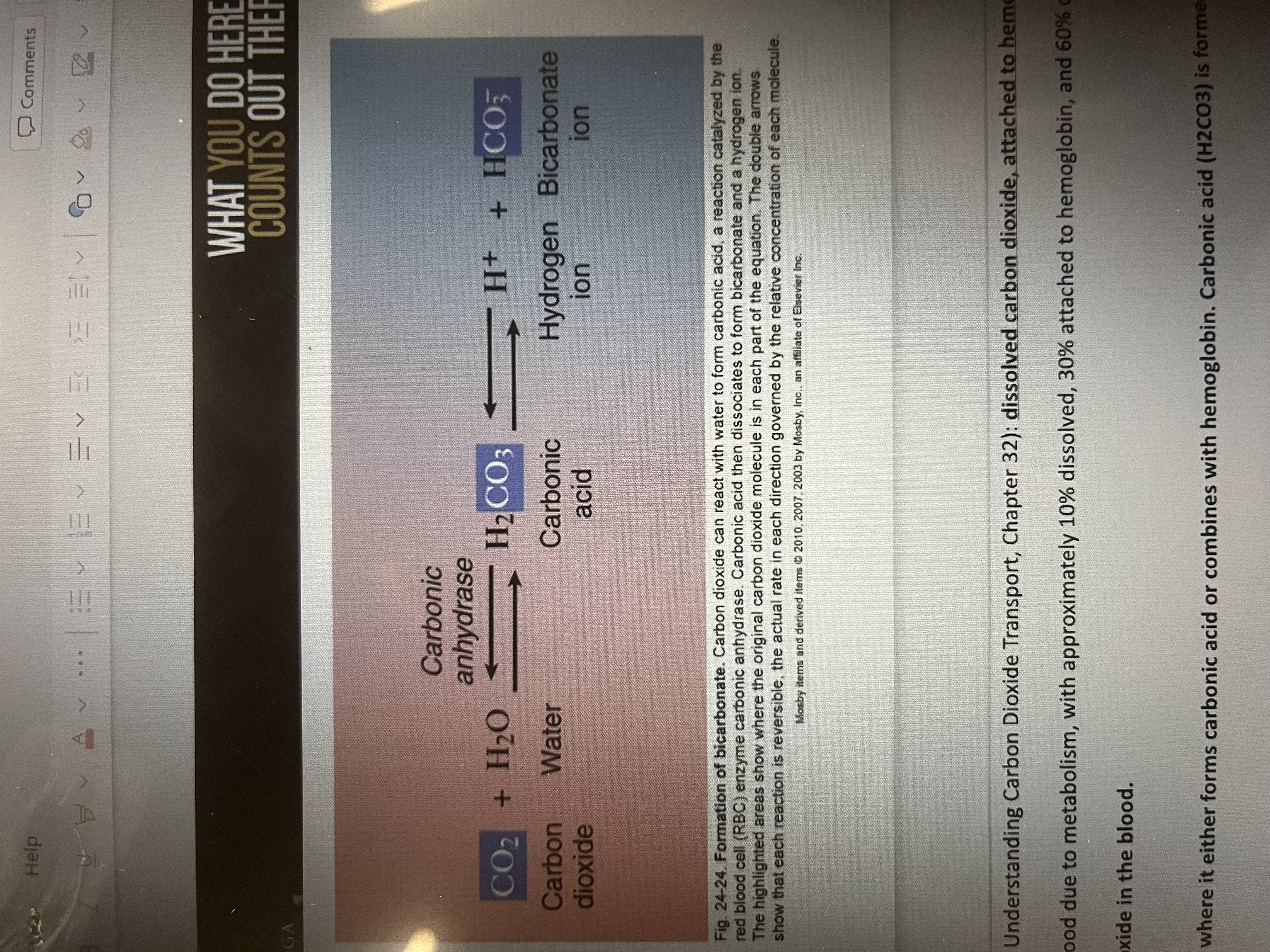Respiratory Physiology: Lung Volumes, Gas Exchange, and Oxygen Dissociation
1/21
Earn XP
Description and Tags
Flashcards covering key vocabulary terms related to respiratory physiology, lung volumes, gas exchange, and the oxygen dissociation curve based on the lecture notes.
Name | Mastery | Learn | Test | Matching | Spaced |
|---|
No study sessions yet.
22 Terms
Functional Residual Capacity (FRC)
The volume of air remaining in the lungs after a normal expiration, when respiratory muscles are relaxed and no external forces are applied.
Elastin
A substance that can work against the lungs by decreasing elasticity and compliance, and increasing resistance in lung tissue, especially with age.
Capacities (Lung)
Combinations of two or more lung volumes.
Vital Capacity
The total amount of air that can be exhaled after a maximal inspiration.
Accessory Muscle Use
The engagement of non-primary respiratory muscles (e.g., sternocleidomastoid, scalenes, intercostals) during breathing, indicating increased work of breathing.
Dyspnea
Difficulty breathing, which can manifest as difficulty breathing and speaking (e.g., 'one-to-two word dyspnea').
Dead Space
An area in the lung (e.g., apices) where respiratory movement occurs but no gas exchange takes place, characterized by elevated ventilation and reduced perfusion.
V/Q Mismatch (Ventilation-Perfusion Mismatch)
An imbalance in the lung between ventilation (airflow to alveoli) and perfusion (blood flow to alveoli), leading to inefficient gas exchange.
Ventilation (V)
The process of moving air in and out of the lungs.
Perfusion (Q)
The process of blood flowing through the capillaries of the lung tissue.
Thrombus
A stationary blood clot within a blood vessel.
Embolus
A blood clot (or other foreign material) that detaches and travels through the bloodstream, potentially causing a blockage elsewhere.
Shunting
The mixing of oxygenated and deoxygenated blood due to a V/Q mismatch, resulting in a deoxygenated state in the cellular organism.
O2 Dissociation Curve
A curve that illustrates the relationship between the partial pressure of oxygen and the percentage of hemoglobin saturated with oxygen, showing how readily oxygen binds to and is released from hemoglobin.
Allosteric Changes
Changes in the shape of a protein (e.g., hemoglobin) at one site that affect the binding of a molecule at another site.
Blood pH
A measure of the acidity or alkalinity of the blood, with a normal range typically between 7.35 and 7.45.
Acidic Blood (>7.35 pH)
A state where blood pH is lower than normal, causing the O2 dissociation curve to shift to the right, promoting a looser binding of oxygen to hemoglobin and easier release to tissues.
Alkaline/Alkalotic Blood (<7.45 pH)
A state where blood pH is higher than normal, causing the O2 dissociation curve to shift to the left, promoting a tighter binding of oxygen to hemoglobin and making it harder for oxygen to be released to tissues.
Shift to the Right (O2 Dissociation Curve)
Indicates decreased affinity of hemoglobin for oxygen, leading to easier oxygen release to tissues; promoted by decreased pH, increased PCO2, increased temperature, and increased 2,3-DPG.
Shift to the Left (O2 Dissociation Curve)
Indicates increased affinity of hemoglobin for oxygen, leading to harder oxygen release to tissues; promoted by increased pH, decreased PCO2, decreased temperature, and decreased 2,3-DPG.
Carbonic acid equation
CO2 +H2O → ← H2Co3 → ← H+ +HCo3
